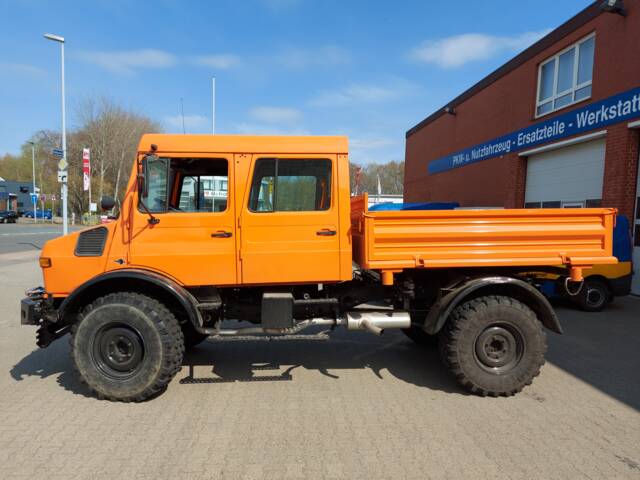- Car
- Mercedes-Benz
- Mercedes-Benz Unimog (1 offer)
Mercedes-Benz Unimog classic cars for sale
The Mercedes-Benz Unimog stands alone as a robust, multipurpose vehicle—valued for its off-road mobility, technical diversity and legendary engineering. From early agricultural use to firefighting, military, and expeditions, each Unimog built since 1949 carries a part of German industrial history and a reputation for versatility. Explore a broad spectrum of Unimog classics, ranging from utilitarian origins to rare collector’s pieces—built to outperform under all conditions.
Search results
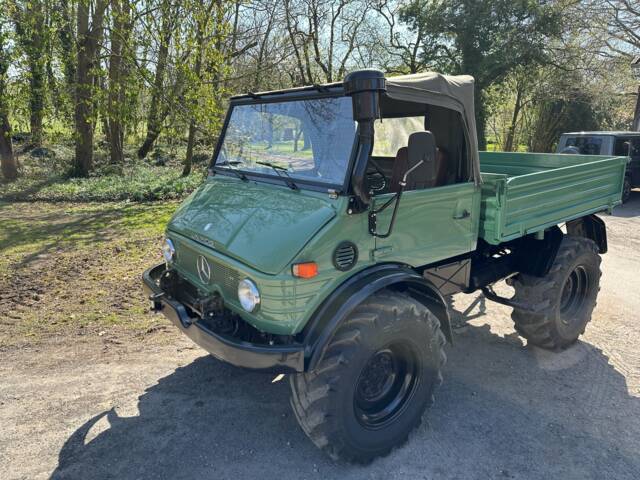
Mercedes-Benz Unimog listing references from Classic Trader
Below you will find listings related to your search that are no longer available on Classic Trader. Use this information to gain insight into availability, value trends, and current pricing for a "Mercedes-Benz Unimog" to make a more informed purchasing decision.
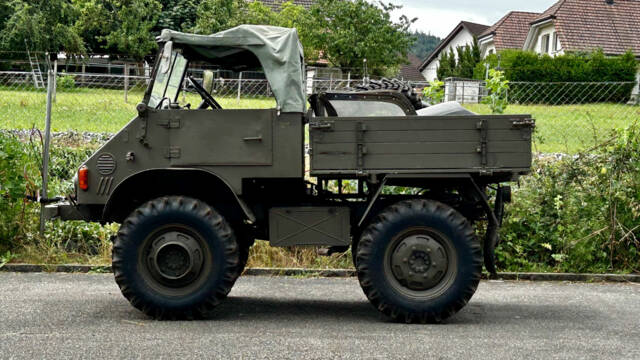
1967 | Mercedes-Benz Unimog 411
Lot 13 Unimog 411.118 U411c Lieferwagen (1967). Schätzpreis CHF 12'000 bis CHF 16'000
1988 | Mercedes-Benz Unimog U 1300 L
Äußerst seltener Unimog 435 U1300 L37 DOKA

1979 | Mercedes-Benz Unimog 416
U1100
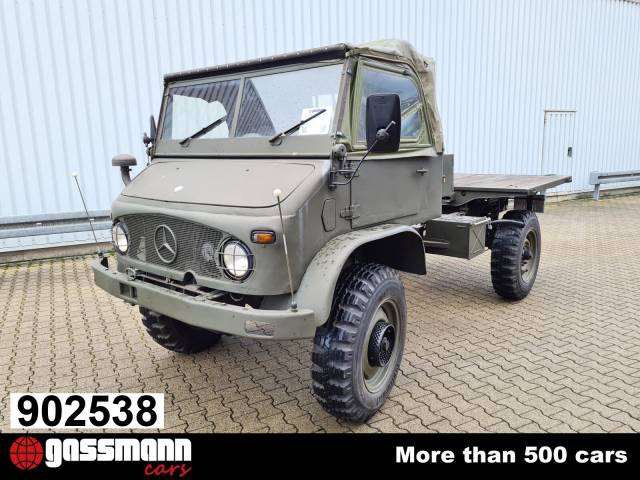
1964 | Mercedes-Benz Unimog 404 S
UNIMOG 404 S 4x4 Cabrio
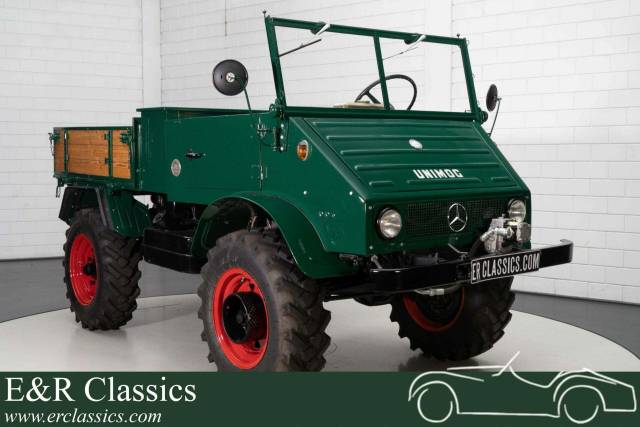
1961 | Mercedes-Benz Unimog 30
Mercedes-Benz Unimog Cabriolet | Uitvoerig gerestaureerd | 1961
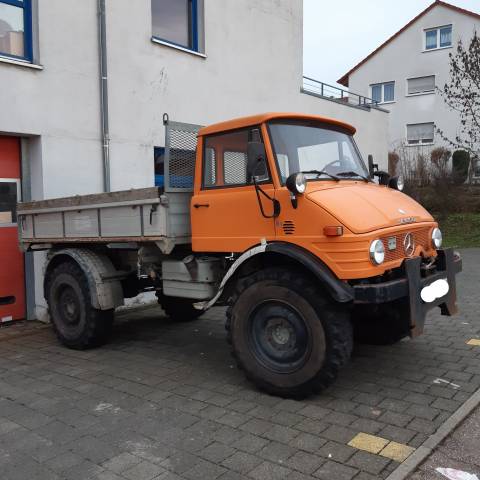
1984 | Mercedes-Benz Unimog 416
Unimog

1957 | Mercedes-Benz Unimog 30
Unimog 30, 411 Froschauge, 4x4

1953 | Mercedes-Benz Unimog 401
Mit Mercedes Heckseilwinde
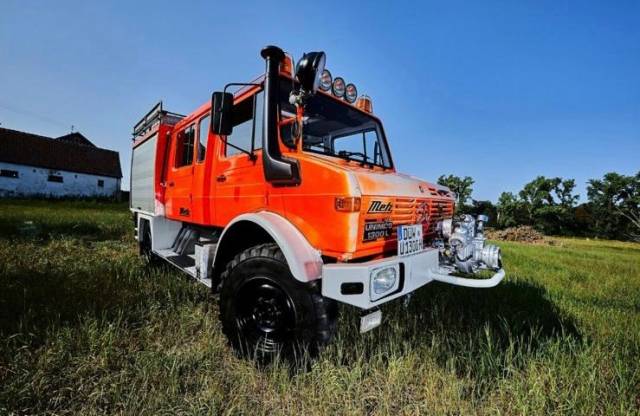
1979 | Mercedes-Benz Unimog U 1300 L
Unique rarity - prototype & party mobile
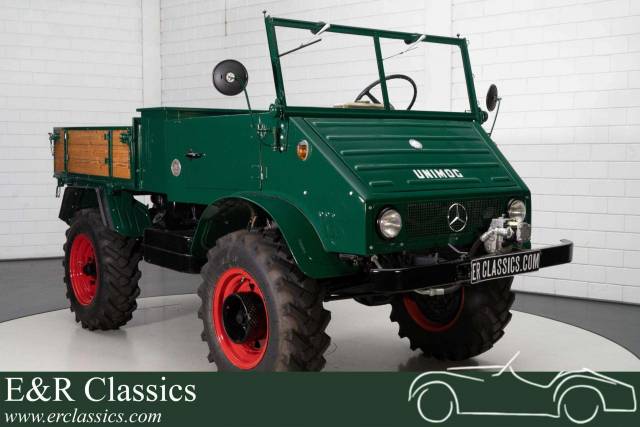
1961 | Mercedes-Benz Unimog 411
Mercedes-Benz Unimog Cabriolet
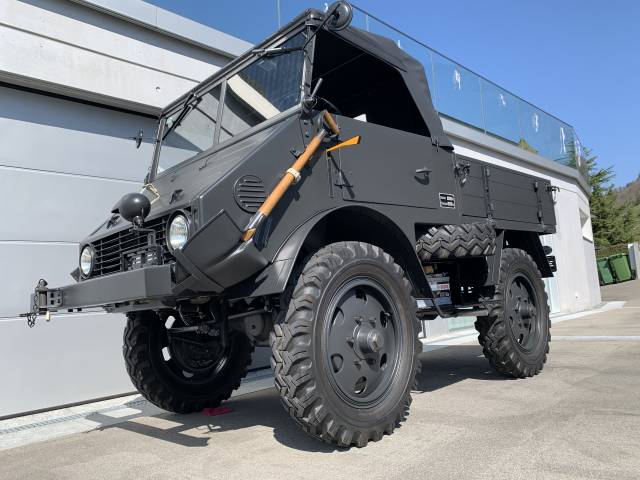
1952 | Mercedes-Benz Unimog 2010
Schweizer Armee Dieseli, 6+2 Plätze, Sammlerfahrzeug
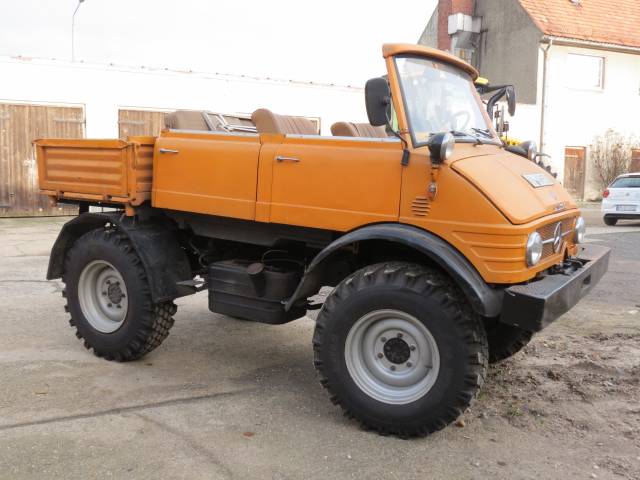
1966 | Mercedes-Benz Unimog 406
Kabrio 5 Sitzer
History of the Mercedes-Benz Unimog
The development of the Mercedes-Benz Unimog traces back to post-war Germany, when Albert Friedrich designed a compact, four-wheel drive utility vehicle aimed at agricultural use. Its name stands for 'Universal-Motor-Gerät,' reflecting its universal purpose. Production began in 1949 with Boehringer, before joining Daimler-Benz and carrying the three-pointed star. The Unimog rapidly found a multitude of roles: its unique mechanics, powered axles, and short overhangs made it unmatched for challenging terrain. Early models like the 2010 set the standard, with successors adapted for rescue, transport and specialist construction. The reputation for adaptability and mechanical ingenuity ensured its continued evolution and global deployment, from Alpine huts supply runs to frontline disaster operations.
Model History
The Unimog’s lineage reflects decades of technical advancement. The earliest series—such as the U2010 and its successor, U401—laid the mechanical foundations. Subsequent model families, like the U406/U416, became widely recognised for their durability in both civilian and military sectors. The S 404 gained the highest sales, with over 64,000 units built until 1980. Mid-era models U1000-U1300 standardised coil-sprung axles and improved cab comfort, while series such as U300-U500 introduced electronic controls and ergonomic upgrades. Present-day models like U5023 blend advanced electronics and traditional Unimog robustness, ensuring the name endures across generations with adaptive suitability for a vast range of special applications.
Highlights and Notable Features
Unimogs are renowned for their versatility and robust construction. Standout features include symmetrical axles, all-wheel drive, portal axles for exceptional ground clearance, and a multi-link chassis. Most models are equipped with front and rear PTOs, enabling operation of implements like snowploughs and forestry equipment. Driver cabins vary from open soft-top to insulated hardtops, and modifications abound—from fire service configurations to expedition trucks.
Technical Data
Special Editions and Collectible Models
Several Unimog versions hold special status: the S 404, due to its production numbers and broad use by military forces; early Boehringer-produced 2010s, prized for their historic value; and rare cabriolet/folding cabin trucks or special rescue/firefighting outfit packages. Some military variants and export specials (such as Swiss Army releases) exhibit unique bodywork or equipment that heightens collectability. Additionally, factory-built expedition setups and limited colour runs—like original olive military paint or specialist fire brigade red—are regularly highlighted by collectors.
Weak Spots and Common Issues
Purchasing a Unimog requires rigorous inspection tailored to its model series. Typical weaknesses include limitations of cooling systems (thermostat and water pump failures leading to overheating), Axis oil leaks and bearing problems, ageing Tellerrad bolts—especially on 2-piece 6-lug axles, and noise or wear in the plastic-based pivot balls. Modern types bring complex electronics as new failure sources, with faults in control modules or sensors not uncommon. Early series often show rust in frames and aged seals; mid-series (U1000/1300) frequently need overhaul of axles and gearboxes. For all models, careful review of maintenance records and retrofitting with monitoring points (oil temp, grease nipples) can prevent costly repairs. Attention to electrical modifications is also critical, as poor rewires can introduce multiple faults. Comprehensive service history and attention to component upgrades strongly benefit longevity.
Engine and Performance, Transmission and Handling
Unimogs are engineered for outstanding off-road performance, featuring high-torque diesel and, in rare cases, petrol engines, heavy-duty gearboxes with multiple low-range options, and portal axles for unbeatable ground clearance and axle articulation. Transmission options usually allow for a split between road and field gearing, with select models offering hydrostatic drive for delicate work. Handling is distinctive: extremely stable on ruts and uneven surfaces, thanks to coil spring suspension and rigid frames, yet spartan at speed—older units often capped at under 80 km/h. Later models improve cab comfort and on-road composure, but the focus remains on versatility and reliability under adverse conditions. Popular Unimogs on the platform include the 411, U82, 406 and S 404. The 411 stands out for supply (22.9%) and attention to its rugged reliability, while the 406—with a 14.6% share—offers a balanced platform for both civilian and military projects. The S 404, as the most widely produced, represents the near-universal application Unimogs are known for. Notable technical data: OM 352 diesel engines (80–130 hp typically), 8/8 gearboxes, selectable 4WD, with robust PTO setups enabling diverse work roles.
Interior, Comfort, Exterior and Design
Unimog cabins range from stripped-down utility to enhanced comfort in modern U series. Earliest models feature minimalistic metal dashboards, vinyl benches, and optional cabriolet setups with removable doors. Later models introduce ergonomic seats, stronger heating, and improved soundproofing. Exterior design is led by function: pronounced ground clearance, short overhangs and a modular frame permit a vast array of specialist bodywork. Factory paint includes fire service red, military olive, and various municipal orange tones. Accessories include hydraulic tipper beds, expedition racks, winches, auxiliary lights, sports seating with four-point harnesses, and non-standard tanks. The interior commonly adapts for expedition or rescue roles with extra insulation, auxiliary instruments, and mounting points for specialist gear.
Other relevant features
Unimogs have always been known for their modularity and adaptability. The strong parts supply and active user communities ensure excellent support for rebuilds. Official documents and maintenance records are widely available, including original manuals and technical literature. Vehicles are seen at off-road rallies, classic shows, and continue to be used in professional service roles. The modular build allows vast customisation—from snow removal rigs to expedition campers. Importantly, driver licence categories for Unimog operation vary by country and weight, so checking local regulations is essential.
Summary
The Mercedes-Benz Unimog offers unmatched engineering for those seeking a historically significant, technically capable and supremely adaptable utility vehicle. With production running from 1949 through the present and an extensive model palette ranging from simple farmer’s tool to global expedition base, the Unimog remains without equal in terms of function and mechanical clarity. Buyers benefit from a healthy supply, strong parts support and active council, but should expect to thoroughly inspect the technical state, particularly regarding axles, cooling and electronics. The Unimog’s unique features and long heritage ensure it continues to appeal to a demanding and knowledgeable community of enthusiasts who value practical engineering and off-road performance above cosmetic luxury.

